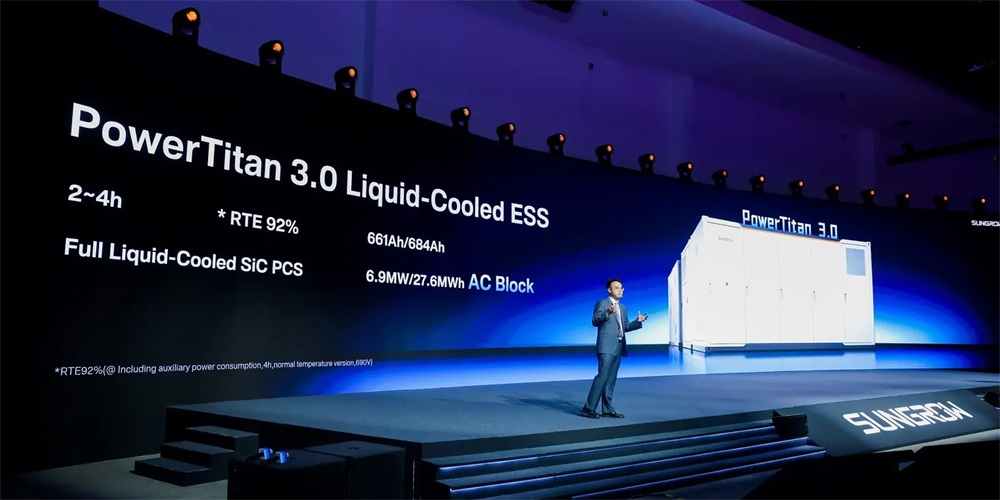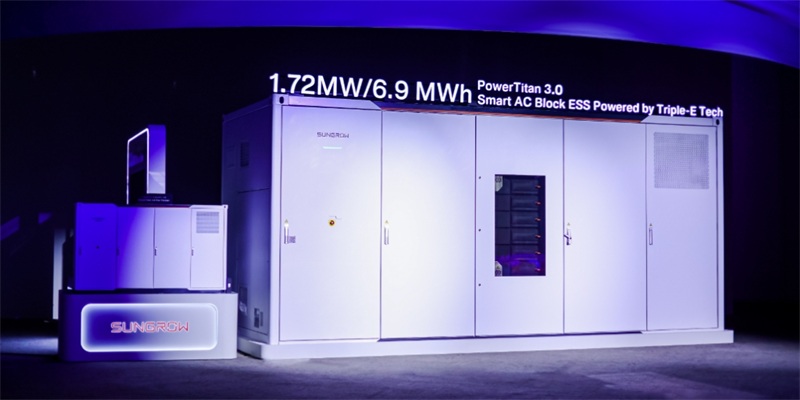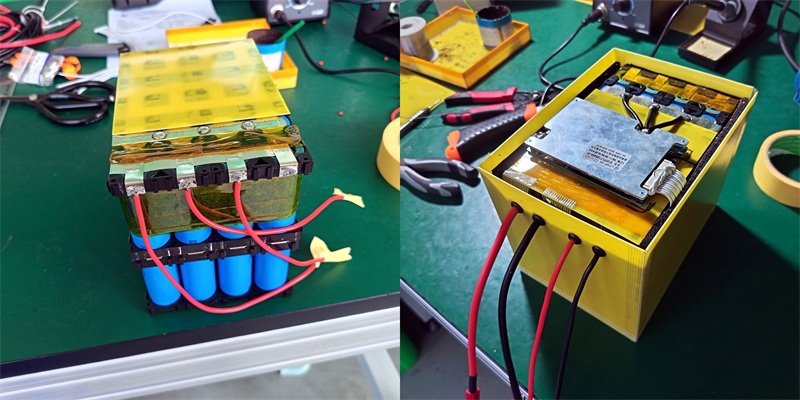Sungrow Launches PowerTitan 3.0: Redefining Utility-Scale Energy Storage for the MEA Region

Dubai, U.A.E., August 25, 2025 — Sungrow, a globally leading provider of PV inverters and energy storage systems, officially introduced its next-generation energy storage solution — PowerTitan 3.0 — at the 2025 MEA PV & ESS Summit in Dubai. Designed specifically for the challenging climates and operating conditions of the Middle East and Africa (MEA), PowerTitan 3.0 incorporates cutting-edge advancements in thermal management, battery design, and grid-forming capabilities, establishing a new industry benchmark for efficiency, safety, and reliability.
Fully Liquid-Cooled, Full-Power Operation
Sungrow unveiled the PowerTitan 3.0 AC liquid-cooled energy storage system, which supports 2–4 hours of operation. In a 20-foot configuration, the system integrates a 1.72 MW power conversion system (PCS) with 6.9 MWh battery capacity, enabling a 4-hour duration with a single block achieving 6.9 MW/27.6 MWh.
Equipped with high-temperature-resistant silicon carbide (SiC) components, the PCS achieves up to 99.3% efficiency and sustains full-power output at 55°C without derating—ensuring long-term reliability, safety, and profitability even under extreme heat. This innovation raises the overall system conversion efficiency to 92%, setting a new standard in large-scale energy storage system (ESS) design.
Redefining Battery Cells: A Revolutionary Breakthrough
To support increasingly large power plant capacities, PowerTitan 3.0 utilizes Sungrow’s innovative stacked energy storage cells (684Ah and 661Ah). This design eliminates corner stress found in traditional wound cells, reduces internal resistance, and significantly mitigates risks such as lithium plating, internal short circuits, and thermal runaway.
Sungrow’s proprietary battery structure positions exhaust vents and electrode tabs at opposite ends of the cell, helping maintain battery integrity even when vents are activated. At the pack level, each unit includes a dedicated exhaust channel, and thermal insulation layers between cells prevent propagation. Coupled with AI Battery Management 2.0—which achieves over 95% accuracy in lithium plating diagnosis and more than 99% precision in thermal risk warnings—the system ensures proactive and reliable risk prevention.
With an optimized pack design, energy density reaches 467 kWh/m², and a 15 cm back-to-back layout enables a 1 GWh power plant to occupy only 7,270 m²—a 22% reduction compared to the previous generation. This compact design significantly reduces construction requirements and overall capital expenditure.
Plant-Level State of Charge (SOC) Balancing
Leveraging Sungrow’s AC-DC integration architecture, PowerTitan 3.0 assigns one PCS per rack to eliminate SOC imbalance between racks. With an SOC estimation error of less than 3% and automated calibration, balancing is extended across rack and block levels. This innovation enables up to 8% more discharged energy over the system’s lifecycle, maximizing returns for operators.
Engineered for Harsh Environments
The extreme climate in the MEA region makes auxiliary power consumption a critical cost factor for energy storage plants. Unlike conventional designs that recirculate hot air, PowerTitan 3.0 employs a top-only exhaust design for both the ESS and medium-voltage switchgear, preventing heat recirculation. Large-scale simulations indicate that at 55°C ambient temperature, traditional systems experience an 8°C rise at the air inlet, whereas Sungrow’s design limits this increase to just 1.53°C—reducing auxiliary power consumption by 9%.
With AI Bionic Thermal Balance 2.0, the system anticipates weather and operational conditions to enable flexible compressor and fan control with ±1°C precision, further reducing auxiliary power use by 10%.

Along with IP55 protection and C5 anti-corrosion certification, PowerTitan 3.0 delivers reliable performance across desert, coastal, and sandstorm-prone areas. Additionally, Sungrow has set new global safety standards through record-breaking large-scale burn tests on its PowerTitan 1.0 and 2.0 systems, demonstrating zero fire propagation under extreme conditions.
Grid-Forming Technology: Enabling Renewable Integration
Energy storage plays a critical role in absorbing fluctuating renewable power generation while supporting grid stability. PowerTitan 3.0 incorporates Sungrow’s advanced grid-forming technology, proven in landmark projects such as Saudi Arabia’s NEOM City—the world’s largest multi-energy system integrating solar, wind, storage, and hydrogen. With a solar-to-storage ratio exceeding 3:1, the system delivers millisecond-level power response, microsecond-level voltage control, and GW-scale black start capability, strengthening grid stability in markets with high renewable penetration.

